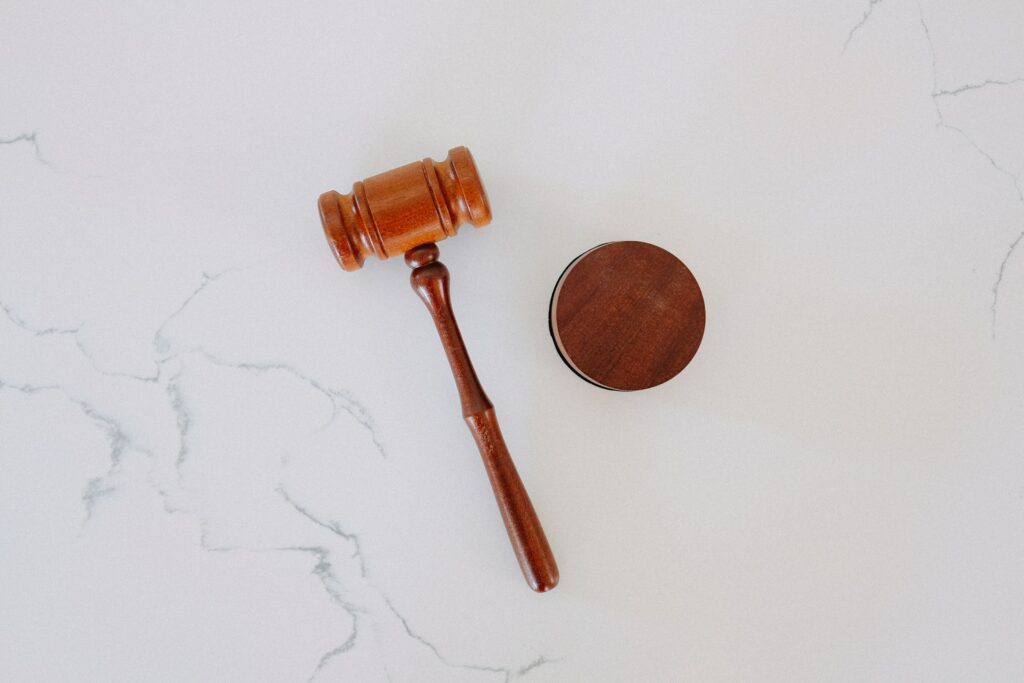Trademarking Your Audio Identity
May 31, 2022
You may ask yourself, “Why should I bother worrying about audio trademarks in the first place? Is it really important for our brand at all?”
The answer to those questions is, that it is vitally important for your brand to protect your audio identity. Just as you would protect your visual identity, logo, or products to ensure that other competing companies can’t use or steal the same ideas, you would protect your sounds. If your audio identity is not trademarked, it allows other competitors to use similar sounds, allowing them to benefit from copying from your business and brand.
This is not to say that it is easy to trademark your audio identity. There are, in fact, some very concrete (and also vague) requirements that can take a long time to live up to. Let’s get into it.
Trademark law in general
Trademark law is fundamentally different from copyright and patent law. While copyright protects your work and patent law protects inventions, trademark law is the link between a company and its customer base. This link is a trademark and is typically either a logo or a word/name.
Trademarks indicate which company a given product or service originates from. The primary purpose of the trademark law is to protect the characteristics, i.e., the origin of function, the product, or the service.
Opposite copyright-protected work, trademarks can be registered. This registration means that the trademark owner can document exclusive rights to use the trademark concerning specific wares or services. Hereafter, the trademark owner can prove that the trademark was acquired on a specific date for a particular brand. This holds great value in disputes regarding trademark violations.
If, for example, we trademarked the words “Sonic Minds” for the production of sound, then no other company could use similar or identical trademarks concerning similar or identical services. For example, in the UK, there is a registered trademark by the name of “SONICMIND” made in 2016 for the sale of musical instruments and music. If we wanted to move into the British market concerning the sale of music, they could oppose our use of “Sonic Minds” in Britain.
Trademark registrations are typically logos and words, but in theory you can trademark everything – even audio. It is relatively new to be able to register audio trademarks, and to our knowledge, only 13 have been reported in Denmark. Although, in the EU, there are over 250 audio trademarks and even more on their way. To compare, there are over 1.4 million verified trademarks in the EU in total.
“An audio trademark used in relation to hardware must deviate significantly from the norm and industry customs to be registered. Otherwise, the consumer will perceive the sound as a functional element rather than a trademark.”

Conditions of protection
Trademarks must be able to be reproduced clearly and precisely. For audio trademarks, registration requires submitting an audio file or an accurate reproduction of the sound in notation. In addition, there are several requirements for the trademark itself. Among others, it must not be misleading, be applied in bad faith, or violate public order and morality.
For audio trademarks, it may also be significant that the mark must not consist exclusively of property necessary to obtain a technical result or give the product significant value. This means, for example, that you can probably not register the sound of a can being opened.
Furthermore, an essential requirement for trademark registration is that the trademark must have distinctiveness. There is no requirement regarding personal touch to obtain the protection of a trademark under trademark law.
The requirement for distinctiveness entails that the trademark must have distinctiveness to the degree it can distinguish one company’s goods and services from another company. It must have a so-called “characteristic function.” The trademark must also not be descriptive.
The authority registers the trademark that first assesses whether there is a distinctive character. In Denmark, this is the Danish Patent and Trademark Office, and in the EU, it is the EUIPO. The authorities base their assessment on how an average consumer will perceive the brand.
The requirement for distinctiveness also applies to audio trademarks. It can, however, be a challenge that consumers are used to hearing sounds concerning products and services. Therefore, the consumer will often perceive the sound as just a sound and not a company’s characteristic. Thus the sound does not have the sufficient characteristic function to be registered as an audio trademark.
In Danish practice, this has been a problem with sound in relation to hardware. In the context of hardware, the sound is typically used as something that highlights a particular event, e.g. when headphones are turned off. Therefore, an audio trademark used in relation to hardware must deviate significantly from the norm and industry customs to be registered. Otherwise, the consumer will perceive the sound as a functional element rather than a trademark. This obstacle can be overcome if the sound is sufficiently complex. It happened for Intel in October 2021, where they registered an audio trademark for use in computers, among other things.
The same applies to the use of sound in apps, software and telephones, and the like, which are typically also equipped with sounds. That was why the sound from the Danish app “MobilePay” couldn’t be registered at first. Consumers are not used to perceiving sounds in apps as trademarks, and the sound was not distinctive enough to change consumer perception.
The MobilePay sound did eventually get registered. This resulted from MobilePay subsequently documenting that distinctiveness had been acquired by incorporation.
Incorporation occurs when even quite ordinary and simple words or signs (or sounds) are used in a particular way to a sufficient extent and thus acquire a different meaning. Because MobilePay could document extensive use of the MobilePay sound, the Danish Patent and Trademark Office accepted that the brand had acquired distinctiveness through incorporation – the Authority thus accepted that when consumers heard the brand, they would think of a company.
In summary
It is thus possible to register audio logos as audio trademarks. But this requires either that the audio logo itself deviates significantly from the norm and industry customs within the specific product category (and is therefore distinctive) or that the audio logo is used sufficiently intensively (and thus has acquired distinctiveness by incorporation).
The Intel sound can illustrate what is needed to register an audio trademark. However, whether an audio brand is distinctive is always a concrete assessment, which depends on several different factors. The authorities’ assessment is probably also under development, as audio logos are gaining more and more value.
All in all,
- When utilizing audio branding, you need to use your audio logo consistently throughout your branding, in all channels, and for a long time for it to be registered as a trademark from the consumer point of view.
- It is next to impossible to trademark sounds that come naturally from your product, like wrapping paper, can openings, car door sounds, etc. This doesn’t mean that these sounds should be neglected, though, as they are still hugely important for the customer experience.
- Your audio logo needs to be unique and deviate from the norm and industry customs. You need to distinguish it from the audio logos of other companies.
- If the sound is perceived only as a functional element by the consumer, it will not pass as a trademark.
- Trademarks can be acquired through incorporation, meaning that the sound has been used enough to be synonymous with the brand.
We hope this makes your journey within audio trademarking easier. As mentioned in the beginning, trademark law can be a jungle to navigate, so consult local/national authorities and a trademark attorney before diving in.
